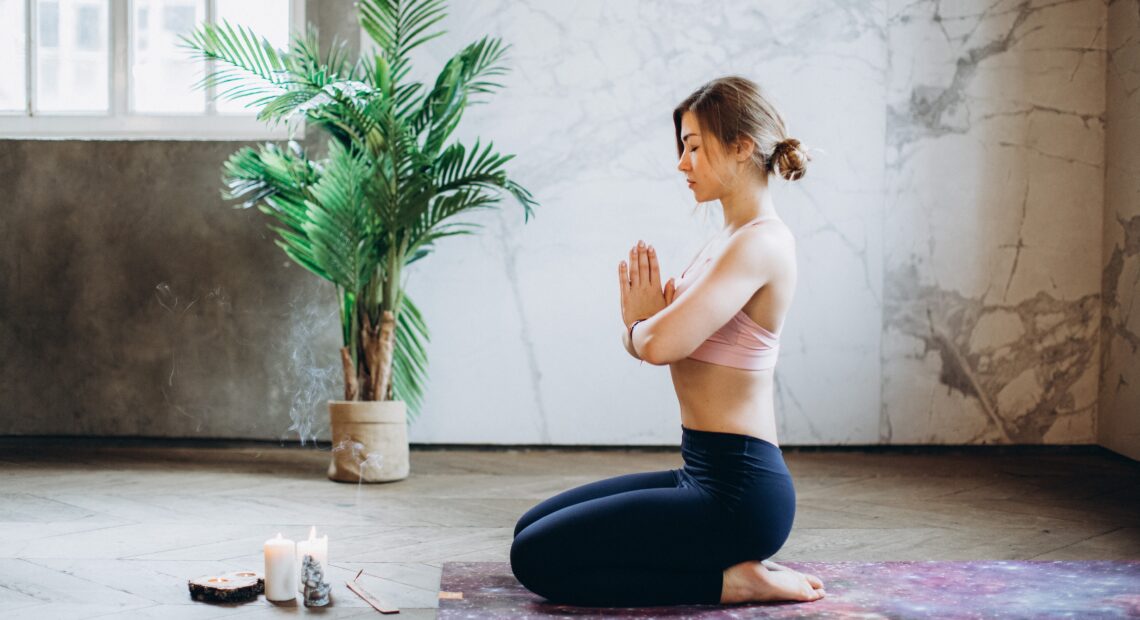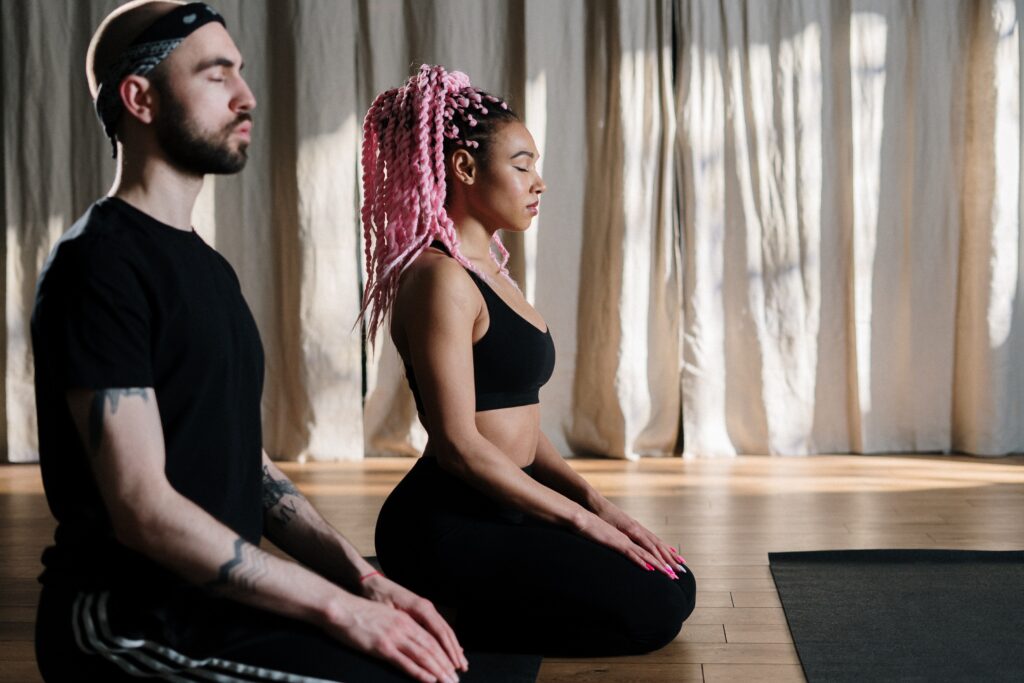Meditation: 5 Easy Steps to Start Your Mindfulness Journey

Due to global pandemic and current social unrest in the US, meditation is more popular than ever. In any bookstore, you will find a couple of shelves with publications on the theory and various techniques of meditation. In yoga studios, separate classes are held for those who want to learn “the art of awareness.” There are dozens of mindfulness apps for your phone for relaxation and stress management.
However, not everyone decides to meditate. The word “meditation” a lot of us associate with the image of a person frozen for several hours in an uncomfortable position. There is still a myth that meditation requires certain character traits, such as discipline and calmness. There are those who are sure that meditation is time-consuming or requires getting up at dawn and leading an ascetic lifestyle.
Let’s agree that these stereotypes (and all stereotypes in general) limit our willingness to try new things. Perhaps, they even made the desire to sit down and actually try it go away. It forces one to distrust those who claim that meditation has helped them improve their relationship with their family and friends, quit smoking or reduce stress.
These scientific findings confirm that meditation makes us better in different ways:
- A study by psychology professors at Northeastern University has shown that meditation makes us kinder and more compassionate. It helps us more easily give up comfort in order to alleviate the suffering of strangers;
- Meta-analysts at Johns Hopkins University have proven that meditation fights stress and depression as effective as antidepressants;
- In addition, mindfulness practices reduce suffering and pain;
- Scientists from Leiden University have proven that meditation makes us more creative. It also improves your imagination and helps to concentrate and stay attentive.
To feel these beneficial effects, let’s figure out how to start your meditation journey.
Types of Meditation and Steps to Help You Get Started
STEP 1. Choose the type of meditation suitable for you. Mira Dessy, a meditation author and holistic nutritionist defines the right meditation for you: “It’s what feels comfortable and what you feel encouraged to practice.” There are six common ways to meditate and none of them involves sitting in the lotus position for several hours.
For the first five, take a comfortable pose. You can sit in Sukhasana (cross-legged pose) or Vajrasana (heel-pose.) Or you can just sit on a chair. It is better not to lay down as you might fall asleep.
- Focused Meditation
Who should try it: beginners or anyone in need of extra help with focusing.
In this technique, you concentrate on any of the five senses of your body, like visualizations or sensations. During this type of meditation, you will be asked to focus on your breathing which will help you to relax and clear your headspace.
- Mantra
Who should try it: those who feel uncomfortable in silence and find peace in repetition.
To put it simply, a mantra is a short analog of prayer in the form of a “sacred” text, word or syllable. In fact, chanting a mantra is a great stress relief and positively affects your mental health, according to the study. It’s easy to practice this type of meditation: choose the mantra you like the one you like and repeat it to yourself. You can use “Aum” onomatopoeia, inspirational phrase of any type or sing along to some popular mantras.
- Spiritual Meditation or Prayer
Who should try it: individuals who enjoy in silence and look for spiritual growth.
Yes, praying could also be a sort of meditation. These practices are popular in Hinduism and Daoism, as well as Christianity. However, you don’t necessarily need to be religious to pray. For example, you could think about what you value most in your life. These may be material things, relationships, special feelings or memories. Express your gratitude for what you have.
- Mindfulness
Who should try it: Anyone who doesn’t have much time for a longer meditation.
Mindfulness is an ongoing lifelong process of accepting all that arises without judgment. As a meditation, it’s the freest practice that originates from Buddhism and teaches the meditating individual to comprehend and release stress at the moment. Use it in everyday activities, for example, when washing dishes, drinking tea or making breakfast. Immerse yourself in the process and think about what you are doing.
STEP 2. According to Andy Puddicombe, creator of the popular app Headspace, you need to relax and feel comfortable. Therefore, do not hesitate to put a pillow under your back or take cover with a blanket.
STEP 3. Be flexible and willing to change practices, as according to research, diverse meditation techniques develop our brains in different ways. You can meditate anywhere, anytime: in a favorite chair with a cat on his lap, in the subway under the sound of wheels, in the early morning at the beach or sitting in bed before going to bed.
STEP 4. If you want to achieve results by doing any activity you need to be consistent. Acclaimed yoga and meditation instructor Ashley Turner underlines that meditation needs to be practiced daily. One minute a day is real, you can always find it, be it right after you have just woken up or in the evening before going to sleep.

STEP 5. Do not expect results. Expectations carry us into the future and prevent us from concentrating. The purpose of meditation is to bring us to the present moment and help us feel life here and now.











